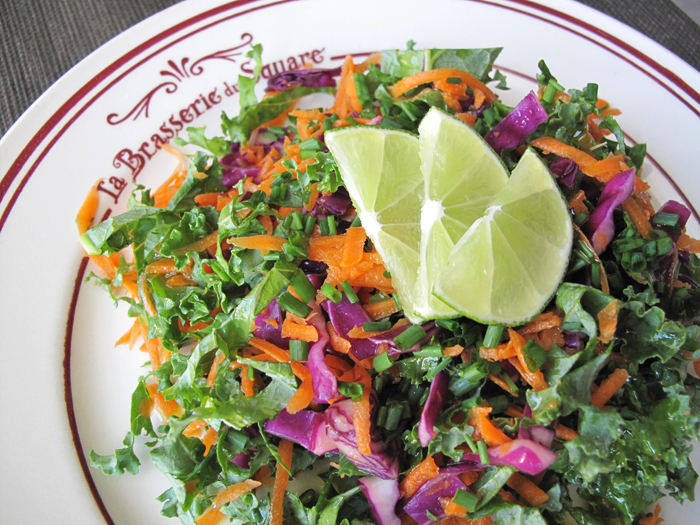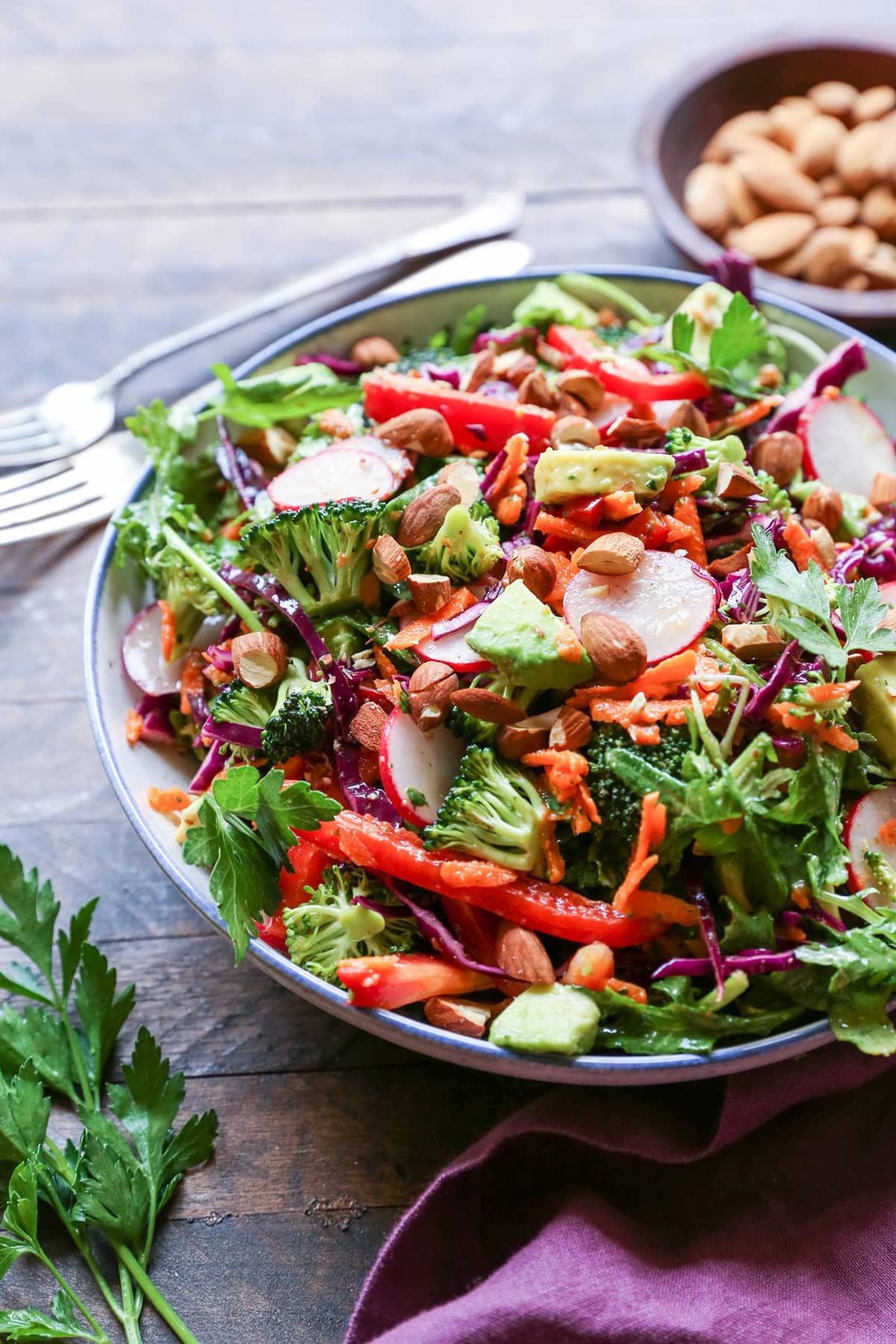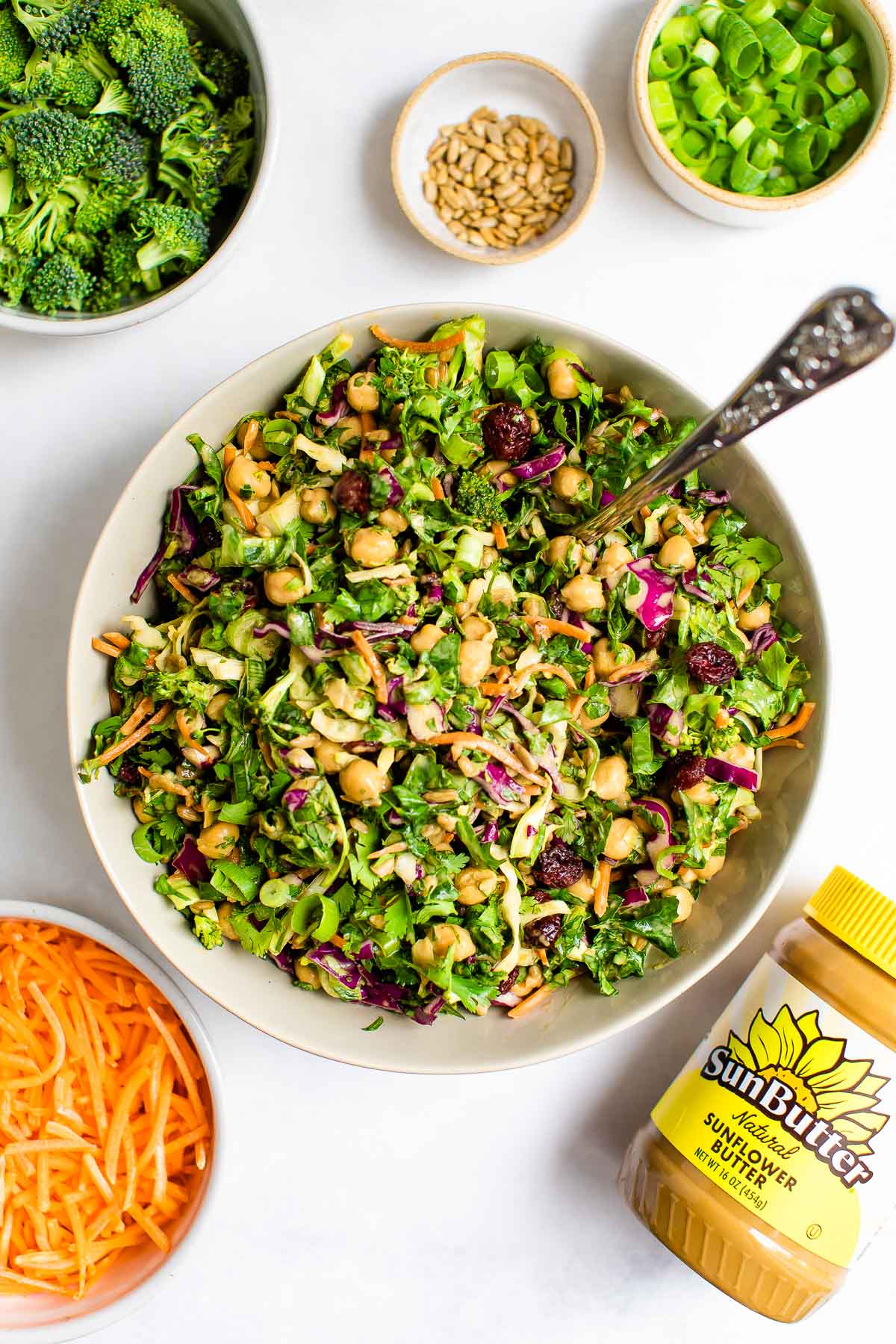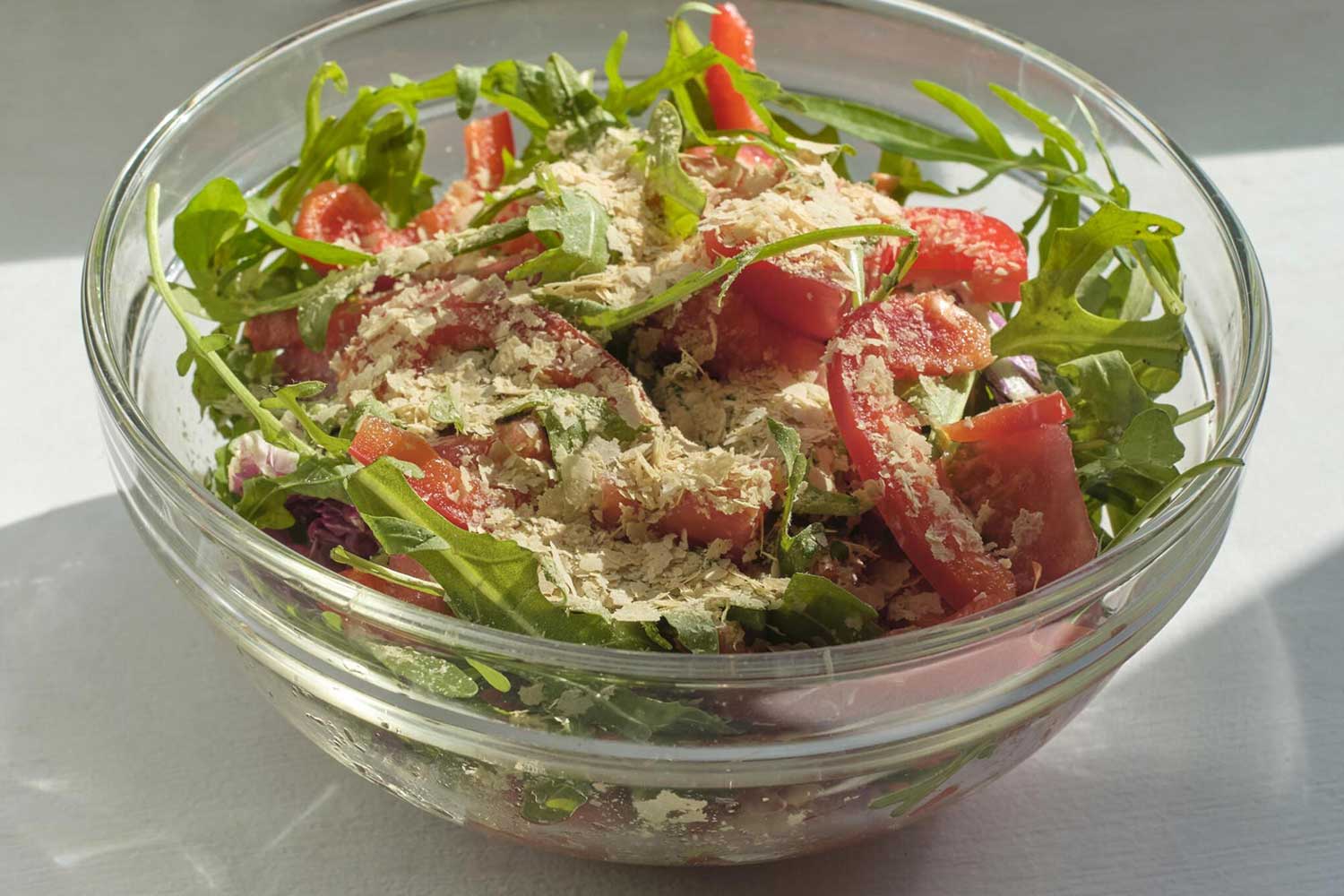Welcome to our guide on how to build a colorful and nutrient-dense salad! A salad packed with vibrant vegetables, fruits, protein, healthy fats, and flavorful toppings is not only visually appealing but also incredibly beneficial for your overall health. By incorporating a variety of colors into your salad, you can ensure that you are getting a wide range of essential nutrients. In this article, we will explore the importance of choosing the right base, selecting and preparing fresh produce, adding protein and healthy fats, enhancing flavor with herbs and dressings, and adding crunch and texture with toppings. Let’s get started on your journey to creating a delicious and nutritious salad!
Benefits of eating a colorful and nutrient-dense salad

Eating a colorful and nutrient-dense salad provides a multitude of benefits for your health. By incorporating vibrant vegetables and fruits, you can ensure that you are consuming a wide variety of essential nutrients such as vitamins, minerals, and antioxidants. These nutrients help support your immune system, improve digestion, and promote overall well-being. Additionally, salads packed with protein and healthy fats can keep you feeling full and satisfied, making them a great choice for weight management. The high fiber content in salads also helps regulate blood sugar levels and promotes healthy digestion. So, enjoy the benefits of a vibrant and nutrient-rich salad by making it a regular part of your diet.
Choosing the right base for your salad
When it comes to building a nutrient-dense salad, the base plays a crucial role. Opt for leafy greens like spinach, kale, or romaine lettuce as they are packed with essential vitamins and minerals. These greens provide a refreshing crunch and serve as a foundation for your salad. You can also include other vegetables like cucumber or bell peppers to add more variety and texture. Remember to wash your greens thoroughly before using them to remove any dirt or pesticides. By choosing the right base, you ensure a solid foundation for your colorful and nutrient-rich salad.
Picking Vibrant Vegetables and Fruits
When selecting vegetables and fruits for your salad, aim for vibrant and colorful options. Different colored produce provides a range of nutrients, so incorporating a variety of colors ensures you’re getting a diverse array of vitamins and minerals. Some examples include red tomatoes, orange carrots, yellow bell peppers, purple cabbage, and green avocado. Choose fresh and ripe produce to maximize flavor and nutritional content. Remember to wash your fruits and vegetables thoroughly before using them, and consider buying organic options when possible to minimize exposure to pesticides.
The importance of including a variety of colors in your salad

Including a variety of colors in your salad is important for several reasons. Each color in fruits and vegetables indicates the presence of specific nutrients and antioxidants. By incorporating a range of colors, you ensure that you’re getting a diverse array of vitamins, minerals, and phytochemicals. For example, red produce like tomatoes is rich in lycopene, which can help protect against certain cancers. Orange and yellow vegetables like carrots and bell peppers are high in beta-carotene, which promotes healthy vision and skin. Purple vegetables like cabbage contain anthocyanins, which have antioxidant and anti-inflammatory properties. Including a variety of colors in your salad not only makes it visually appealing but also boosts its nutritional value.
Selection and preparation of fresh produce

When selecting fresh produce for your salad, look for vibrant colors and firm textures. Choose a variety of fruits and vegetables to ensure a diverse range of nutrients. Wash and prepare your produce properly by rinsing with water, removing any bruised or damaged areas, and cutting them into slices, cubes, or bite-sized pieces. Keep in mind that some produce, like avocados, should be prepared right before serving to prevent browning. By selecting and preparing fresh produce with care, you can ensure that your salad is both visually appealing and nutritionally satisfying.
Adding Protein and Healthy Fats
To make your salad more filling and balanced, it’s important to add protein and healthy fats. Protein helps to keep you satisfied and supports muscle repair and growth. Opt for lean protein sources like grilled chicken, salmon, tofu, or hard-boiled eggs. Additionally, incorporating healthy fats such as avocado, nuts, seeds, or olive oil can provide essential nutrients and add a creamy texture to your salad. Remember to portion your proteins and fats appropriately to maintain a balanced meal. By including these elements in your salad, you can enhance its nutritional value and make it more satisfying.
Protein options for a filling and balanced salad
To make your salad more filling and balanced, it’s important to include protein sources. Opt for lean protein options such as grilled chicken, salmon, tofu, or hard-boiled eggs. These protein options not only add a burst of flavor but also help keep you satisfied for longer periods. When choosing proteins, consider portion sizes to maintain a balanced meal. Adding protein to your salad not only adds nutritional value but also supports muscle repair and growth. So go ahead and amp up your salad with delicious and protein-packed ingredients.
Incorporating healthy fats for taste and satiety
Incorporating healthy fats into your salad not only adds flavor but also helps keep you feeling satisfied. Opt for sources of healthy fats such as avocado, nuts, seeds, or olive oil. These ingredients not only provide a luxurious texture to your salad but also offer important nutrients like omega-3 fatty acids and vitamin E. Remember to use these fats in moderation to maintain a balanced meal. A drizzle of olive oil, a sprinkle of crushed walnuts, or a few slices of creamy avocado can transform your salad into a delicious and satiating meal option.
Enhancing Flavor with Herbs and Dressings

Utilizing fresh herbs can elevate the taste of your salad and add a burst of flavor. Experiment with herbs like basil, cilantro, mint, or dill to complement your ingredients. Chop them finely and sprinkle them over your salad for a fresh and aromatic touch. In addition to herbs, dressings play a significant role in enhancing the flavor of your salad. From classic vinaigrettes to creamy options like ranch or Caesar, dressings can tie all the ingredients together. Be mindful of portion sizes when drizzling on the dressing to avoid overpowering the flavors and adding unnecessary calories.
Utilizing fresh herbs to elevate the taste of your salad
Fresh herbs can breathe new life into your salad, adding a burst of flavor and aroma. Experiment with herbs like basil, cilantro, mint, or dill to complement your ingredients. Chop them finely and sprinkle them over your salad for a vibrant and refreshing touch. The herbs not only enhance the taste but also offer various health benefits, such as antioxidants and vitamins. Don’t be afraid to get creative and mix and match different herbs to create unique and delicious flavor profiles in your salad.
Exploring different dressings to complement your ingredients
When it comes to dressing your salad, the options are endless. Different dressings can enhance the flavors of your ingredients and add a delicious touch to your salad. Experiment with a variety of dressings like vinaigrettes, creamy dressings, or even homemade options. Consider the flavors and textures of your salad ingredients when choosing a dressing. A light citrus vinaigrette can complement a fruity salad, while a creamy ranch or Caesar dressing can add richness to a vegetable-packed salad. Remember to drizzle your dressing lightly to avoid overwhelming the flavors of your colorful creation.
Adding Crunch and Texture with Toppings

To add a satisfying crunch and texture to your salad, consider adding toppings. These toppings not only provide an interesting contrast in texture, but they also offer added flavor and nutritional benefits. Some crunchy toppings you can try include croutons, toasted nuts, seeds, or even crispy vegetables like jicama or radishes. These toppings can be sprinkled on top of your salad or mixed in for even distribution. Remember to choose toppings that complement your salad ingredients and add a satisfying crunch with every bite. Don’t be afraid to get creative and experiment with different textures!
Choosing crunchy toppings for added texture
When it comes to adding a satisfying crunch and texture to your salad, the toppings you choose can make all the difference. Consider options like croutons, toasted nuts, seeds, or even crispy vegetables like jicama or radishes. These crunchy additions not only provide a delightful contrast in texture, but they also add flavor and nutritional benefits. Sprinkle them on top of your salad or mix them in for even distribution. Get creative and experiment with different combinations to find the perfect crunch for your salad. Don’t forget to choose toppings that complement your ingredients and add a satisfying crunch with every bite.
Nuts, seeds, and other flavorful additions

When it comes to adding extra flavor and texture to your salad, nuts, seeds, and other flavorful additions are the perfect choice. They not only provide a satisfying crunch but also introduce a variety of tastes to your salad. Consider options like toasted almonds, pumpkin seeds, sunflower seeds, or even dried cranberries for a touch of sweetness. These additions not only enhance the overall flavor profile of your salad but also offer additional nutritional benefits with their healthy fats, proteins, and antioxidants. Sprinkle them generously on top of your salad to take it to the next level of deliciousness!
Assembling and Serving Your Colorful Salad
To assemble and serve your colorful salad, start by properly arranging your ingredients on a plate or in a bowl. Place the base of your salad first, followed by the vegetables, fruits, protein, and any other toppings. This will ensure that each bite is filled with a variety of flavors and textures. When it comes to dressing, drizzle it lightly over the salad and toss gently to coat all the ingredients. Remember to be mindful of portion control to maintain a healthy balance. Finally, serve your vibrant salad immediately to enjoy it at its freshest and most flavorful state.
Properly arranging your ingredients for presentation

To create an eye-catching and visually appealing salad, it’s essential to arrange your ingredients in an organized and thoughtful manner. Start by placing the base of your salad, such as leafy greens or grains, at the bottom of your plate or bowl. Next, arrange your vibrant vegetables and fruits in different sections, creating a beautiful color contrast. Add your protein source and any additional toppings strategically, ensuring even distribution throughout the salad. Finally, garnish with fresh herbs or add a sprinkle of seeds for an extra pop. The meticulous arrangement will not only enhance the aesthetic appeal but also make each ingredient easily accessible for a balanced taste experience.
Tips for dressing, tossing, and portion control
When it comes to dressing your salad, remember that a little goes a long way. It’s best to dress your salad lightly and toss it well to evenly distribute the flavors. Consider using a vinaigrette made with olive oil and vinegar for a healthier option. To control portion sizes, use measuring spoons or a small ladle to add dressing. Additionally, portion control is important when serving your salad. Use a smaller plate or bowl to visually fill up your plate and prevent overeating. Enjoy your colorful and nutrient-dense salad in moderation for a balanced meal.

